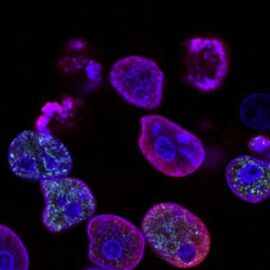

This article gives you a glimpse of what you can learn with Shortform. Shortform has the world’s best guides to 1000+ nonfiction books, plus other resources to help you accelerate your learning.
Want to learn faster and get smarter? Sign up for a free trial here .
What is biohacking and how do you do it? Can you really hack your biology? What are some biohacking practices that can help enhance your health and ramp up your performance?
Biohacking is a concept that gained traction in media relatively recently. Biohacking refers to the pursuit of enhanced physical health and mental performance by optimizing your lifestyle, environment, sleep, eating patterns, etc.
In this article, you’ll learn how to biohack your way to optimum health with simple diet, sleep, and lifestyle modifications.
What Is Biohacking?
What is biohacking? Depending on who you ask, you’ll likely get a different definition of the term “biohacking.” This is because biohacking covers a wide range of practices, from taking health supplements to implanting a computer chip into your hand. Biohacking is often dabbed “do-it-yourself biology.”
In the broadest sense, biohacking refers to any practices aimed at enhancing your biology—from following simple healthy lifestyle guidelines (getting enough sleep, eating clean, etc.) to more radical practices (e.g. chip implants, cryotherapy, and neurofeedback).
As with everything, different biohacking techniques will appeal to different people. But as a beginner, it’s important to get the basics right (your diet, sleep, and lifestyle) before you move on to the advanced stuff.
1. Biohacking Diet
It’s no secret that food has a tremendous impact on your overall health. However, many people underestimate the extent to which the foods they eat influence their bodily functions. Nowadays, the focus is more on food’s caloric and macronutrient content (protein, carbs, fat) than its source (animals vs plants) and micronutrient profile. But there is more to healthy eating than following a balanced diet that is within your calorie limit (although it’s a good start).
There is plenty of evidence that eating animal-derived foods is harmful to your health:
- The Nurses’ Health Study showed that consumption of processed and unprocessed red meat was associated with an increased risk of death from cancer and heart disease, and shorter life spans. Each increase of 1 serving of meat per day increases mortality in a stepwise fashion. Processed red meat is worse than unprocessed red meat.
- A Taiwanese population study showed that even eating just a little meat (a serving every few days) increased the rates of diabetes by 2x in men and 4x in women, compared to vegetarians.
You might ask “In these research studies, are vegetarians healthier simply because they tend to be skinnier?” No—in population studies, plant-based diets show lower mortality even controlling for BMI, wealth, and other confounding factors.
Here is some evidence of how plant-based diets increase health:
- The more plant-based foods you eat, the lower your hypertension rates. Flexitarians show 23% reduced risk of hypertension; vegans show 75% reduced risk.
- Japanese men showed a 25x increase in prostate cancer risk after World War II. This is also associated with a 7x, 9x, and 20x increase in egg, meat, and dairy consumption respectively.
This, however, doesn’t mean that as long as the foods you are eating are plant-derived, they are good for you. Eating processed foods, animal- or plant-derived, is also harmful.
Processed foods contain many endocrine disruptors —also called hormone disruptors—mimic hormones (mostly estrogen), causing weight gain, early puberty, and a host of other health issues. For example, Butyl hydroxytoluene (BHT) is a preservative used in processed foods (anything with a shelf life that’s whole grain) (The Plant Paradox).
For optimum health and longevity, eat a diet that is primarily composed of whole plant-foods. Whole plant foods have been associated with longer telomeres (parts of your DNA that are associated with aging), while refined foods and meat are associated with shorter telomeres.
How to Eat for Optimum Health
In 2015, the government’s Dietary Guidelines Advisory Committee looked at the scientific evidence and concluded that the healthiest diets were ones high in fruits*, vegetables, whole grains, and low-fat dairy and low in red meat, processed meat, refined grains, and sugar-sweetened foods. They also determined that healthy diets were higher in plant foods and lower in animal foods.
In his book, How Not to Die, Michael Greger suggests a simple way of biohacking your diet to achieve better health: think of food as a traffic light system.
Green Foods: Unprocessed plant foods
Unprocessed means nothing bad is added, and nothing good is taken away.
- Sometimes, processing actually makes food healthier. Tomato juice may be healthier than whole fruit because the nutrient lycopene is more available. Similarly, cocoa powder is processed to remove saturated fat.
- You can eat unlimited amounts of green foods.
Yellow Foods: Processed plant foods, Unprocessed animal foods
- Processed means something bad is added, or something good is taken away.
- For example, almond milk is worse than eating pure almonds.
- Ideally you’d replace yellow foods with their corresponding green foods, which are more nutritious.
Red Foods: Ultra-processed plant foods, Processed animal foods
- Eat red foods sparingly. In driving, you might run a red light once in a while, but you don’t make a habit of it. The same is true of red foods.
- It’s OK to eat these in small amounts, if they help you eat more green foods (such as bacon bits or hot sauce with vegetables).
As a simple checklist for what to eat everyday for optimum, Dr. Greger recommends these 12 components (“Daily Dozen”). Each box represents one serving.
- Beans: 3 Servings
- Berries: 1 Serving
- Other Fruits: 3 Servings
- Cruciferous Vegetables: 1 Serving
- Greens: 2 Servings
- Other Vegetables: 2 Servings
- Flaxseeds: 1 Serving
- Nuts: 1 Serving
- Spices: 1 Serving
- Whole Grains: 3 Servings
- Beverages: 5 Servings
- Exercise: 1 Serving
2. Biohacking Sleep
You’re probably getting less sleep than you should be. Many people are more chronically sleep-deprived than they realize, and the punishments for this are severe—reduced productivity and happiness, and increased risk of a panel of diseases.
According to Michael Walker, the author of Why We Sleep, there are three ways sleep deprivation is harmful to your brain:
1. Sleep deprivation worsens attention and concentration. Performance progressively worsens with greater sleep deficit, which is especially harmful for those who are performing high-risk activities like driving.
2. Sleep deprivation worsens emotional control. Walker says that when you’re sleep deprived, your amygdala (the part of your brain that controls emotion) can run amok, leading to 60% more emotional reactivity. Sleep disruption is a common symptom of all mood disorders.
3. Sleep deprivation may contribute to Alzheimer’s. Sleep loss may disrupt memory formation as well as the glymphatic cleanup system, which clears out Alzheimer’s-associated plaques.
In addition to the damage it causes the brain, sleep deprivation disrupts the normal function of many physiological processes, likely contributing to a wide range of diseases including heart disease, diabetes, obesity and some cancers.
According to Walker, the optimal number of nightly sleep is 7 hours. Having said that, there are cases of people with a short sleep gene, which means they only need four to six hours of sleep a night with no adverse effects to their health. While not getting enough sleep can affect the average person’s performance and mood, natural short sleepers are typically driven and optimistic.)
What about sleeping too much? Some population studies show an increased risk of death in those who regularly sleep more than nine hours, suggesting sleeping too much might also be harmful.
How to Get Better Sleep
Here are some recommendations for biohacking your sleep:
- Keep the same waking and sleeping time each day. Erratic sleep schedules disrupt sleep quality.
- Practice sleep hygiene—lower bedroom temperature, reduce noise, reduce light.
- No alcohol, caffeine, exercise, or long naps before sleep.
- Get some exercise, which may increase total sleep time and increase quality of sleep. Exercising has more of a chronic effect, meaning it helps in the long run and doesn’t take effect on a day-to-day scale—exercise on one day doesn’t necessarily lead to better sleep that night. But worse sleep on one night does lead to worse exercise the following day.
- Eat a normal diet (not severe caloric restriction of below 800 calories per day). Avoid very high carb diets (>70% of calories) since this decreases NREM and increases awakenings.
- Avoid sleeping pills—they’re no better than a placebo.
3. Biohacking Lifestyle
As you’re integrating healthier foods and good quality sleep into your life, don’t skimp on movement. Not only does a sedentary lifestyle contribute to weight gain, it also increases mortality:
- Men who sit for >6 hours per day have a 20% higher death rate compared to men sitting <3 hours. Women show a larger increase in mortality at 40%. This is true even among people who exercise daily for an hour.
- Every extra hour spent watching TV per day is associated with 11% increased risk of death.
You don’t have to torture yourself with vigorous exercise to reap the benefits of movement. Walking as little as 300 minutes per week reduces mortality by 14%. Walking 150 minutes per week reduces mortality by 7%, and walking 60 minutes/week reduces mortality by 3%.
A possible mechanism behind these effects is endothelial dysfunction—when active, blood flow increases, and blood vessels signal to arteries to relax. This effect doesn’t happen when a person is inactive.
Here are some lifestyle tweaks to reap the benefits of endothelial function:
- Switch to a standing desk—this causes an extra 30,000 calories burned per year.
- Have walking meetings or stand-up meetings instead of sit-down meetings.
- Take short breaks from work, taking just 1 minute to walk or climb stairs.
- Turmeric can improve endothelial function, along with 1 hour per day of exercise.
Although exercise is good for you, it does cause some stress to the body. Here are some tips to help reduce muscle soreness and oxidative stress from exercise:
- Reduce lactic acid with bioflavonoids from citrus.
- Reduce inflammation with anthocyanin flavonoids in berries.
- Whole-food antioxidants reduce DNA damage from exercise, whereas vitamin C supplements promote even more oxidative stress
Habits: The Tool to a Healthier You
Creating new habits is easier when you understand how to approach the different stages of habit formation. Each stage has an accompanying law that, when followed, promotes positive changes in your life. Think of these laws as a framework for designing each stage for optimal habit formation.
1. Cue: Make It Obvious
Because habits are automatic behaviors, you likely don’t notice every cue triggering you to act. Therefore, the first step in creating cues that lead to good behaviors is to become aware of them.
To this end, make a list of all your current habits performed daily. Because behaviors influence each other, the end of one habit often serves as a cue for another. By listing your cues and rewards in this way, you will see what current behaviors may be suitable to cue new desired behaviors. This is called habit stacking—attaching a desired habit to a fully formed habit.
To ensure your cue is obvious, make it as specific as possible. Saying, “I will walk on my lunch break” is less specific than “I will walk around the block [specific location] after eating lunch [specific cue] for 20 minutes [specific intention].” The new action is easier to take when the questions about where, when, and how are already answered.
2. Craving: Make It Attractive
Temptation bundling is one way to make any behavior more attractive. Like habit stacking, use the end of a new behavior as a cue for something that excites you. This helps make the new behavior more enticing.
For example, you’ve set up the end of lunch as a cue to walk for 20 minutes, but you don’t feel driven to walk because you’d rather play video games. If playing video games for 20 minutes becomes the reward for walking, you’ll begin to crave the walk so you can claim your reward afterward.
3. Response: Make It Easy
You will only follow through on behaviors that are easy to perform and require little effort. That is simply human nature. Therefore, to stay motivated, make behavior as effortless as possible. Reducing the effort of an action means removing the friction existing between you and the behavior. The more friction there is, the less likely you are to act.
- If you want to eat a healthier breakfast, remove friction by setting out the items required before bed.
- If you want to read more before bed, place a book on your pillow after waking up each morning.
4. Reward: Make It Instantly Satisfying
Human nature is wired to want instant gratification, but most good behaviors need time before the positive results accumulate. To stay motivated to continue good habits, find ways to create rewards that are instantly satisfying.
Reinforcements are good motivators for continued action. You remember the end of behavior more than any other part. Therefore, make the end of your behavior rewarding with a reinforcement to motivate continued action.
You won’t notice a major difference in your savings account after a week if you deposit one dollar a day. The reward of more financial freedom is too far down the road to elicit immediate pleasure. But the act of saving a dollar a day can be rewarding with a small reinforcement. Each time you deposit a dollar into your savings, give yourself an hour of relaxation, a cookie, or an extra 30 minutes of television. You’ll feel motivated to keep saving if you end the action with something gratifying.
Habit tracking can also make behaviors more rewarding. Create visual representations of your progress by marking a day on a calendar, transferring pebbles from one jar to another, or keeping a journal log of your completed actions. When you can visually see your accomplishments, you’ll be motivated to continue acting.
Best Biohacking Books
Whether you are new to biohacking or are already an experienced self-optimizer, here is a selection of books that can help you take your biology to a new level:
The 4-Hour Body
Author Tim Ferriss has spent years studying how to improve the human body—he interviewed and trained with experts, studied scientific literature, and tried out what he learned on himself. In The 4-Hour Body, he distills the most effective 2.5% of what he discovered into programs you can use to improve six aspects of your body: losing fat and gaining muscle, enhancing sex, improving sleep, managing injuries, improving sports performance, and living longer.
How Not to Die
Picture the end of your life. Do you want to die from heart disease? Cancer? Diabetes?
In How Not to Die, Michael Greger argues that a plant-based, whole-food diet has been scientifically shown to reduce the most common diseases leading to death. He then gives his recommendation for “The Daily Dozen” foods to eat to maximize health benefits.
The China Study
The China Study suggests that we can lose weight and lower disease rates by removing animal foods from our diets.
What sets the whole foods, plant-based diet apart from the fads is the extensive research behind it, detailed and distilled in this book. The evidence is compelling and the message clear: Animal foods lead to disease; plant foods prevent and treat it.
In The China Study, you will learn how a plant-based diet can give you more energy, reverse your heart disease, decrease your cancer risk, outsmart your genes, and make your life longer and healthier.
The Plant Paradox
From the low-carb, high-fat keto diet to whole-foods-based paleo diet, there are countless eating programs promising to help you lose weight and be healthier. The Plant Paradox Program (PPP) is an eating and lifestyle program based on the way foods and products affect your body and immune system; it involves eating lots of the right plants, while avoiding others, in order to reach and maintain a healthy weight and live free of chronic and autoimmune diseases. The program is based on the premise that small things can cause big problems and the key to your health is less about what you add to your diet and more about what you remove.
The Willpower Instinct
Most people think of willpower as a virtue, an admirable trait that we strive for but don’t always achieve. But science tells a different story. Willpower—the ability to exercise self-control when you need it—is an instinct that’s wired into our brains. Yet it seems like willpower vanishes at crucial moments, like when your coworker shows up with a box of donuts.
To harness your innate willpower, you need to understand what factors make you give up your self-control. In The Willpower Instinct, Stanford psychology professor Kelly McGonigal details how our natural willpower gets compromised by stress, distraction, lack of sleep and exercise, and a host of other factors. Using the latest psychology and neuroscience research, she offers strategies to help us defeat procrastination, control cravings, and achieve our goals.
Why We Sleep
In Why We Sleep, “sleep diplomat” Matthew Walker, Ph.D. unlocks some of the mysteries of sleep based on research from both in and outside his Center for Human Sleep Science.
In this book, we’ll explore how sleep happens, its major benefits, and the best ways to get better sleep. We’ll also discuss sleep research from other experts as well as new findings that emerged after the book was published.
Ikigai
In Ikigai: The Japanese Secret to a Long and Happy Life, author and blogger Héctor García (author of A Geek in Japan) and novelist and self-help writer Francesc Miralles teach you to apply the Japanese concept of ikigai, or life purpose, to your own life. Drawing on lessons from the people of Okinawa, who live longer than anybody else on earth, as well as on insights from art, science, and psychology, they show you how to find and follow your own ikigai and cultivate a happy, healthy lifestyle to sustain it.
Atomic Habits
Are there things you wish you could do but don’t know how to begin? Do you struggle to understand how to break bad habits and start good ones? Do you wonder why you behave in certain ways even when you know you shouldn’t? Are you the person you want to be?
The knowledge and techniques provided in Atomic Habits are geared toward helping you discover who you currently are by looking at what you currently do. By detailing the 4 Stages of Habit Formation, James Clear breaks down the psychology of behaviors, describing how actions become habits, why some habits stick and some don’t, and how to reframe your life to create new habits and maintain them over time.
The Miracle Morning
The Miracle Morning presents best-selling author and speaker Hal Elrod’s antidote to living the kind of mediocre life that most people accept as normal. Elrod argues that everyone is capable of achieving their dreams in every area of life, including relationships, finances, career, health, spirituality, and happiness. The answer is committing yourself to personal development by getting up early and following a simple daily routine of silence, affirmation, visualization, exercise, reading, and writing, which can empower anyone to transform any area of life in a surprisingly short time.

Want to fast-track your learning? With Shortform, you’ll gain insights you won't find anywhere else .
Here's what you’ll get when you sign up for Shortform :
- Complicated ideas explained in simple and concise ways
- Smart analysis that connects what you’re reading to other key concepts
- Writing with zero fluff because we know how important your time is






